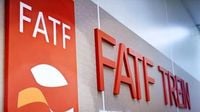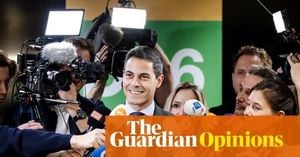On October 24, 2025, the Financial Action Task Force (FATF)—the world’s chief watchdog against money laundering and terror financing—dealt a resounding blow to Iran’s hopes for international legitimacy. Despite last-minute efforts by Tehran to align itself with global standards, FATF announced that Iran would remain on its blacklist of high-risk countries. The decision not only deepened Iran’s isolation but also revealed the regime’s ongoing struggle to reconcile internal power dynamics, economic hardship, and mounting international scrutiny.
For years, Iranian officials have debated whether to ratify international conventions such as Palermo and the Countering Financing of Terrorism (CFT) agreement. After seven years of fierce internal argument, the government finally approved the conventions on October 18, 2025, hoping this would signal reform and ease the burden of sanctions. However, the FATF’s swift rejection of Iran’s efforts underscored global skepticism about the regime’s willingness—or ability—to change. According to Kayhan, a newspaper closely aligned with Supreme Leader Ali Khamenei, “Those who promised that banking problems would be solved with FATF must now answer why, after the conditional approval of the Palermo and CFT conventions, not only was there no breakthrough, but FATF took a more insolent position against Iran?” (October 26, 2025).
The regime’s gamble for legitimacy thus backfired spectacularly. Not only did it fail to win international trust, but it also fueled internal divisions. On October 29, 2025, parliamentarian Kamran Ghanzanfari criticized the Expediency Council for approving the conventions, sarcastically noting that the government had “complied with the demand of the US government,” only to have their “heads hit a stone wall.” The fallout was immediate: instead of bridging gaps, the move exposed rifts between hardliners and pragmatists, as well as between the government and an increasingly disillusioned public.
The FATF’s rationale for keeping Iran on its blacklist was clear. The watchdog cited Tehran’s continued support for terror financing and refusal to address the activities of groups it recognizes as “liberation movements”—many of which are accused internationally of organized crimes such as arms and drug trafficking. Hadi Khani, head of Iran’s Financial Intelligence Unit, revealed that the FATF had asked what Iran would do if one of its recognized groups committed organized crimes. The regime’s answer, he admitted, “was not accepted.” This exchange exposed the fundamental incompatibility between Iran’s regional policies and global financial norms.
Adding to the international pressure, the U.S. Treasury’s Financial Crimes Enforcement Network (FinCEN) announced just a day before the FATF decision that it had identified approximately $9 billion in Iran’s “shadow banking” activities in 2024. These clandestine networks, according to FinCEN Director Andrea Gacki, are essential to funding the regime’s military, weapons programs, and affiliated terrorist groups. Iranian MP Mojtaba Zonnouri bluntly admitted that joining the CFT would mean “putting a noose around the neck of the system,” as it would expose “all the routes for circumventing sanctions and its secret economic cooperation.”
While the regime’s international standing faltered, its domestic situation grew even more dire. October 2025 was among the darkest months in Iran’s recent history, with nearly 300 executions reported—one of the highest monthly totals in 36 years. At least seven women were among those executed, a grim echo of the regime’s harshest periods. According to NCRI, these executions reflect a government gripped by fear, resorting to brutality as it faces political and economic crises.
Stories like that of Sakineh Parvaneh, a women’s rights activist from Quchan, highlight the plight of political prisoners in Iran. Parvaneh, arrested in March 2024 and transferred from Vakilabad Prison to Tehran’s notorious Evin Prison, was sentenced to seven and a half years after a trial without legal counsel. Her charges included alleged collaboration with foreign media, a common accusation against dissenters. Amnesty International has also drawn attention to the case of Zahra Shahbaz Tabari, a 67-year-old political prisoner sentenced to death after a “grossly unfair trial” lasting just ten minutes. The organization has demanded the immediate annulment of her sentence, citing forced confessions and intimidation as hallmarks of Iran’s judicial process.
These human rights abuses have not gone unnoticed. Protests have erupted both inside Iran and among its diaspora in cities such as Sydney and St. Gallen, with demonstrators demanding an end to executions and the release of political prisoners. The People’s Mojahedin Organization of Iran (PMOI/MEK) and other groups have called for accountability for crimes against humanity, insisting that the world must do more than just issue statements of concern.
Against this backdrop, Tehran’s official rhetoric has grown more defiant. On November 1, 2025, Hojjatoleslam Mohammad Javad Haj Ali Akbari, the provisional leader of Friday Prayers, stood before worshippers and called for unity and resistance against what he described as US hegemony and “global arrogance.” Referencing the upcoming anniversary of Aban 13th—known in Iran as the National Day of Fighting Global Arrogance—Akbari linked the current standoff to historic moments like the 1953 coup and the 1979 storming of the US embassy. He declared, “The United States and the Zionist regime remain the most detested governments worldwide, and only steadfast unity and resistance can safeguard Iran’s identity and prosperity.”
Yet, beneath this rhetoric, the regime faces a legitimacy crisis of its own making. Official turnout figures from the 2023 and 2024 elections—widely seen as manipulated—show that at least 60 percent of Iranians reject the current system. Independent analysts suggest that the regime’s true support base may have shrunk to below 10 percent. Across Iran, a new protest movement has emerged, with slogans like “Our enemy is right here—they lie, it’s not America” challenging the government’s narrative. For millions, the insistence on blaming foreign powers rings hollow amid daily hardship and repression.
Internationally, calls for renewed diplomacy and accountability continue. On November 1, 2025, Omani Foreign Minister Badr Albusaidi urged Iran and the United States to resume suspended nuclear negotiations during the Manama Dialogue conference in Bahrain. The talks, hosted by Oman earlier in the year, were derailed in June after Israeli air and missile strikes on Iranian nuclear sites. Iranian Foreign Minister Abbas Araghchi responded by stating that Iran would not halt uranium enrichment or curb its missile program, warning that any new Israeli attack would have “bad consequences.” Araghchi expressed openness to indirect talks with the US for a fair nuclear agreement but rejected Western pressure and any concessions following attacks.
Meanwhile, Egypt has urged both Iran and the International Atomic Energy Agency (IAEA) to resume cooperation over inspections of damaged nuclear sites. Iran, however, has suspended full cooperation with the UN nuclear watchdog, requiring Supreme National Security Council approval for any inspections and excluding access to bombed facilities.
From the streets of Tehran to the corridors of international diplomacy, Iran stands at a crossroads. The regime’s pursuit of legitimacy through surface reforms and repression appears increasingly unsustainable, while activists, ordinary citizens, and the global community continue to demand justice, dignity, and real change. As Tehran’s rulers double down on resistance and rhetoric, the gulf between government and society only widens, raising urgent questions about the country’s future direction.




